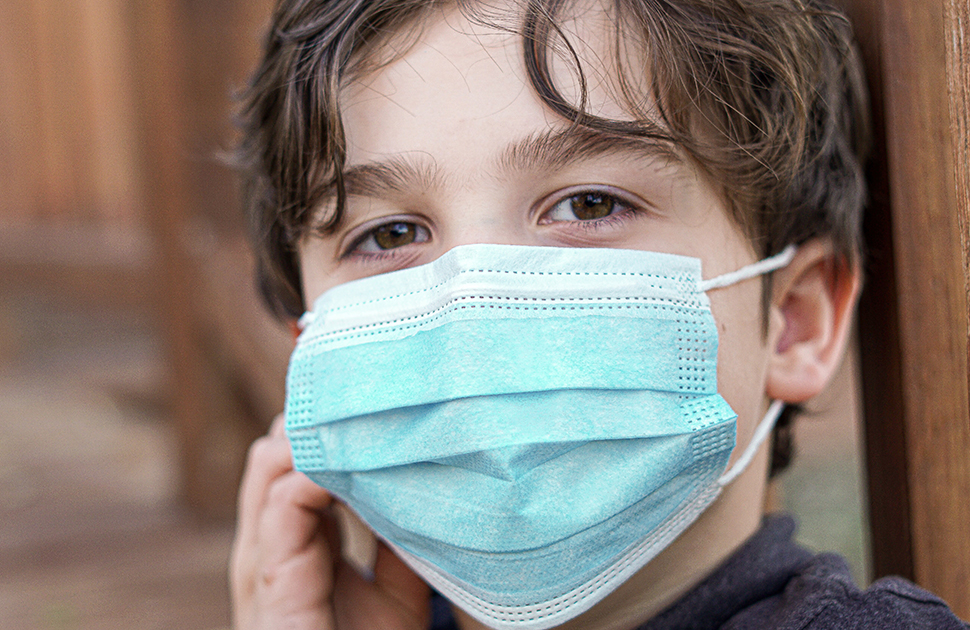
For best results make sure background graphics are enabled.
What is isolation?
Isolation is a way for us to prevent the spread of infections at CHEO. If your child or youth is isolated it means they may have an illness that can be passed on to others and must stay in their room, except for tests or procedures. Isolation doesn’t mean your child will be alone — if they have a respiratory illness, they will likely share a room with another child with the same type of respiratory illness. This is called a cohort.
Are there any risks for my child sharing an isolation room?
We carefully review our isolation policy for each child or youth admitted and will only place your child in a shared room if it is safe to do so. Isolation is just one of the many ways we work to keep children and youth at CHEO safe from infections.
How long will my child be in isolation?
Your child will be isolated until the risk of spreading the infection is gone. Our doctors, nurses and Infection Prevention and Control team will regularly assess your child to decide when isolation is no longer needed.
Staying with your child in isolation
We know it can be very difficult having a child in isolation, and we appreciate your efforts to protect them and others. We all have a role to play in preventing the spread of infection. Here are important steps to take when your child or youth is in isolation:
During your stay
- Wash your hands with soap and water or hand sanitizer for 15-20 seconds every time you enter or leave the room, before eating, and after using the washroom. Practice your handwashing technique. Practice your handwashing technique using the QR code below:

- Children and youth in isolation are not allowed to have visitors, only family caregivers.
- Stay home if you are sick. If possible, you can ask a family member or close family friend to stay with your child during this time.
- Stay in the room with your child as much as possible. Parents and caregivers can carry the same illness as their child so it’s important to limit walking around the unit and hospital as much as possible. If you must leave your child’s room, please wear a mask and wash your hands when leaving the room. We encourage you to use our guest room service menu instead of going to the coffee shop or cafeteria to limit the spread of infections.
- If you develop symptoms while staying with you child, please notify your child's nurse for further guidance and always put on a mask and wash your hands before leaving your child’s room. Masking can help prevent your illness from spreading to others.
- Disinfect equipment you use in the isolation room (like breast pumps). We have Virox wipes you can use. Ask your nurse how to do this.
- Keep things tidy and try not to bring many personal items. This makes it easier for staff to clean the room properly. Use parent lockers for coats and extra personal items to cut down on clutter in the room.
- Don’t share toys, books or other items with others inside or outside your child's room. To control the spread of infections, we limit the number of toys from the playroom that go into isolation rooms.
- Remain in your child's assigned space. Treat the curtains around your child's bed like walls and only spend time and leave belongings in your own space.
Helping your child or youth cope
Being isolated in a room is hard for many children and youth. Here are some tips to make it easier if your child or youth is isolated:
- Explain to them that they are helping to protect other children who could get very sick, especially small babies or other vulnerable patients.
- Video chat with friends and family to help your child connect with loved ones they miss.
- Ask your care team about CHEO's Child Life specialists — they help make it easier for children and youth by offering fun distractions while in their rooms.
- Ask your care team about CHEO Wi-Fi information.
Questions or concerns?
Thank you for your help in keeping everyone safe. We know it’s not easy, and we appreciate your help. Please direct any questions you may have to your child's care team.
Visit cheo.on.ca/PreparingForYourStayOrVisit to stay up to date on our latest parent and caregiver presence policy. The number of caregivers allowed by the bedside is subject to change and there may be times when we must limit the caregivers at the bedside.




